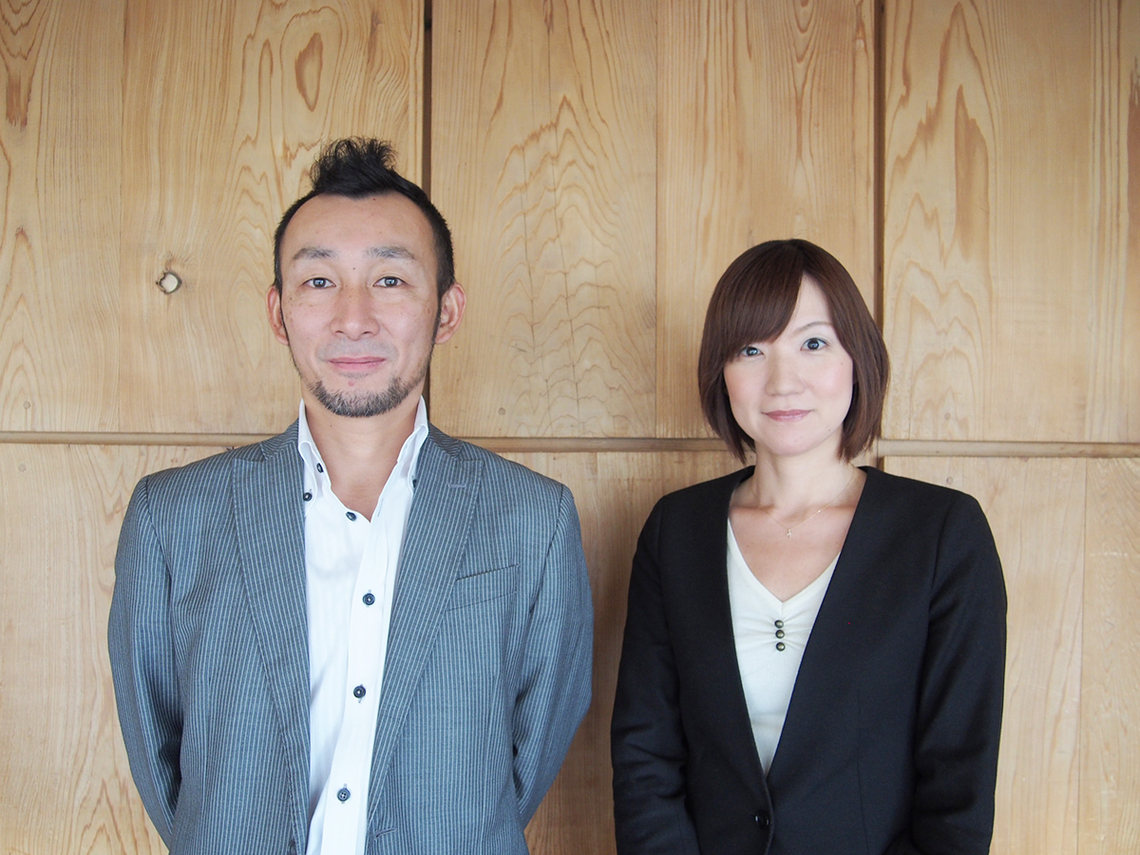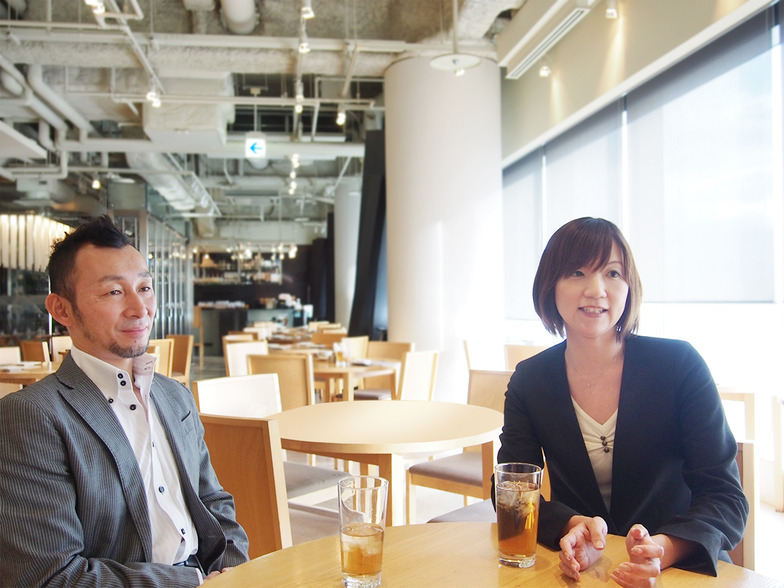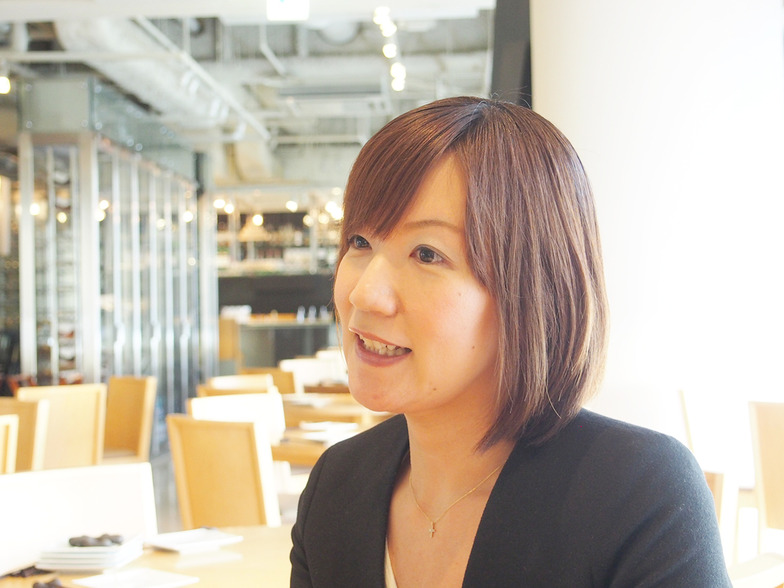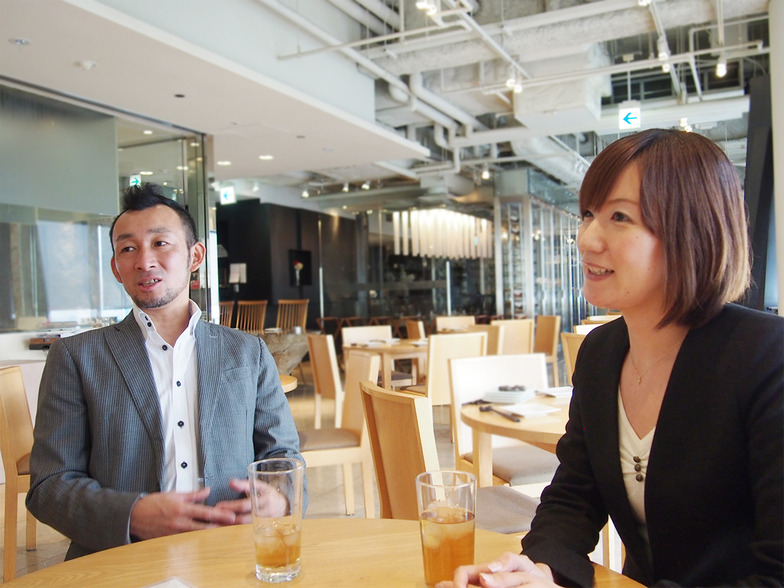In this installment of "The Future of Communication Unlocked by Biological Signals," we spoke with Kamiya and Morishita from Dentsu ScienceJam Inc. about producing joint research projects between companies and universities.
I've always been interested in biological information.
──First, could you briefly share your background, Mr. Morishita?
Morishita: I started working for the Dentsu Group about six years ago at the Osaka branch of Cyber Communications Inc. Initially, I worked as a media representative handling planning and ad networks.
──Did you already have an interest or knowledge in bio-information?
Morishita: The company I joined right after graduation was a division attached to a precision equipment manufacturer's research lab. There, I conducted physiological research like electromyography to study how people react when handling materials or finished devices. I've always been interested in biometric information and new technologies.
──Did you work in that field at Cyber Communications?
Morishita: There was an internal call for proposals for new business ventures. I expressed interest in launching a business utilizing a neuroscience-based approach. While continuing my regular duties, I gradually explored the possibilities. Later, I transferred to the Tokyo headquarters, where I was responsible for conceptualizing and supporting new initiatives.
──Is that where you met Kamiya and the others?
Kamiya: It started when we began the neurowear project. The president of Cyber Communications introduced us, saying, "There's someone here thinking about something interesting similar to neurowear."
Morishita: It was right around the time necomimi had just broken through. I knew that Dentsu Inc. had a team working on sensory approaches using neuroscience and biometrics, so I really wanted to meet them. After the introduction, we gradually started exchanging ideas.
──I see. So that led to Dentsu ScienceJam Inc.
Kamiya: As we progressed with plans to launch Dentsu ScienceJam Inc., we wanted to gather people with expertise in bioinformatics, which is why we invited Mr. Morishita. Neurowear focuses on prototyping new ideas to create new forms of communication, but we also conduct joint research with companies. Mr. Morishita is the one driving that area forward.
Companies and universities have different levels of enthusiasm for research and differing perspectives on timeframes.
──What kind of work do you do in these joint research projects?
Morishita: When companies create new services, they start with idea generation. There are various research challenges, such as understanding the psychological impact the service will have on people. To solve these challenges, research data and know-how are essential. Joint research usually starts with companies directly approaching university professors to propose collaborations. However, companies and universities often have differing perspectives on research intensity and timeframes, frequently creating dilemmas for the corporate side. We provide consulting to navigate these challenges and successfully establish the joint research.
──For example, what kinds of dilemmas exist?
Kamiya: Even when companies want immediate answers, researchers might be thinking in terms of six months or a year. Or, while companies see it as placing an order, researchers view it as a collaborative effort. Mr. Morishita helps bridge these gaps and moves the project forward.
Morishita: We're in the same boat . Since we're in business, we're expected to deliver results, right?
──That's right.
Morishita: Companies consider what they can achieve within limited budgets, while researchers want to delve deeply into their themes. Our approach is to listen to both sides, balance their differing priorities, and work together. Actually, joint research often doesn't go smoothly.
──Really?
Morishita: Misalignments in understanding can lead to outcomes differing from expectations. Sometimes, meetings happen, but time just passes and the project fizzles out. But if we've managed to get everyone facing the same direction, we want to create a path to make it work. If we can figure out how to do that, it becomes easier to achieve results.
Kamiya: That's project management, right?
Morishita: Exactly . We want to shape a methodology for building something together, not just focusing on budget and time costs. Since no company currently does this, we aim to create it at Dentsu ScienceJam Inc.
──What kind of projects are currently underway?
Morishita: We've just started , but thankfully we've begun multiple research projects. One example involves systematizing "comfort" by identifying patterns and incorporating them into systems to create products that feel good to use. In this case, we start by designing and measuring "how people perceive the product" from various perspectives.
──Do requests come directly from companies?
Morishita: Yes . Often, it's not through Dentsu Inc.'s existing channels like advertising or marketing departments, but rather from R&D or technical departments. Additionally, since Professor Yasue Mitsukura from Keio University is part of Dentsu ScienceJam Inc., we also get inquiries from companies that have had past connections with her.
We want to make proposals unique to Dentsu ScienceJam Inc.
──What are your future goals?
Morishita: I believe the most important thing is to help clients utilize the insights gained from research . It's not just about conducting research and getting results; we want to assist them all the way until the product reaches the market. We're also considering expanding our activities with an eye toward overseas markets.
Kamiya: When considering coordinating joint research, there's no need to limit ourselves to Japan. There are excellent researchers overseas, and domestic companies also have a need to expand internationally.
──Are you considering any new initiatives?
Morishita: Currently , understanding human states through biometric information is gaining attention. I believe something significant can emerge from this field, so I feel we must provide effective direction for successful commercialization.
──What does that mean specifically?
Morishita: For example , you can now play sports while measuring your own condition using game consoles. It's called vital signs. Since it's become easy to measure and accumulate biometric data, I'd like to expand services using such mechanisms.
──What about you, Kamiya?
Kamiya: I feel what we're doing is very close to what an advertising agency does. Companies have challenges they want to solve. For an ad agency, the solution is advertising, but we aim to solve those challenges using cutting-edge technology and intelligence. We coordinate technology and scientists to realize new product development for companies, devising methods and bringing projects to fruition. Conceptually, I don't think it differs greatly from what Dentsu Inc. has done before.
Morishita: Yes . That's precisely why we can offer proposals unique to Dentsu ScienceJam Inc. For example, when a beverage maker investigates the difference in perception between their new product and a similar existing competitor product, taste differences show up in brain waves. This expands the potential to discover sensory advantages.
Kamiya: So it's about creating facts.
Morishita: Yes . If we understand what enriches a certain sensibility, that information alone can form content, making it meaningful as PR or advertising material.
Kamiya: Looking ahead, we want to leverage various know-how to create productions unique to Dentsu ScienceJam Inc.
Interview Location: Hibiki Caretta Shiodome





